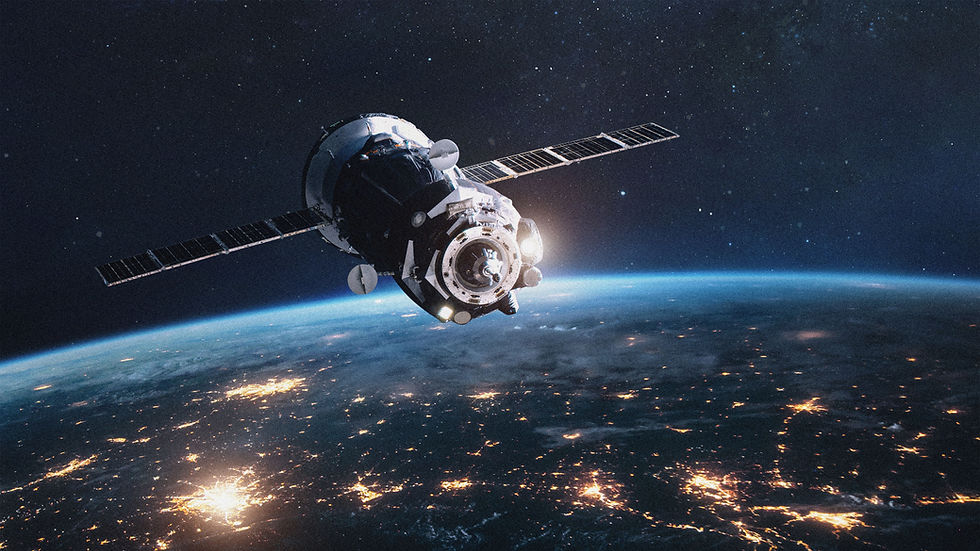Oceanography Making Waves in Space Research
- Amanda Grodman

- Mar 23, 2023
- 3 min read
Updated: Jun 2, 2023
The infinite-seeming nature of space is unique in its many unknowns. Our historic moon landings and upcoming Artemis explorations are paramount in human space history, but this is but a fraction of what the universe truly offers. Parallel to this mystifying environment is Earth’s ocean–a home to diverse organisms, environments, and other conditions hidden thousands of feet under sea level. Due to this intersection between the ocean–collated in the study of oceanography–and space, research and exploration of all aqueous kinds can provide diverse insight into several spatial properties. However, our abilities to travel to space may be more tangible than that of the ocean because of rapidly-developing technologies combined with an increased understanding of general spatial conditions. From futuristic astronaut suits to methods of microscopic organism extraction, the current intersection of space and the ocean is promising–proving that the world is truly our oyster.

The deepest point in the ocean, Mariana’s Trench, is over six miles below sea level. Few have ventured this deep due to the strenuous conditions–from cold temperatures to lung-straining pressures–although several individuals travel (and even live) hundreds of miles in outer orbit (which lacks both gravity and oxygen) every year. What constitutes this division between space and the ocean? The pressure exerted by the deep sea is intense for humans to internally endure, whereas that of space is nearly nonexistent and therefore not harmful to its travelers; underwater "space suits" are no match for this pressure. Moreover, sending resources to space and maintaining a functional living area/collaborative research station (i.e., the ISS) is more manageable when small payloads can be efficiently sent without extensive preparation or costs. The ISS, although several years in the making, is self-sustainable, with those on board able to effortlessly repair any malfunctions or damage–while any such underwater impairments may cause concern. While both forms of exploration may not become affordable to the average individual in the coming years, any hands-on research is beneficial in learning more about the molecular and macroscopic occurrences in and around Earth. Oceanography hopes to bridge these gaps in studying the biological, geological, and compositional state of the ocean by utilizing new technologies (submarines, remotely-operated vehicles, and more!) and going deeper than ever before.

Current research orbiting oceanography is as diverse as the
ocean itself. Recent studies aim to quantify algae photosynthesis in the deep sea to gain insight into chlorophyll (plant pigments that perform photosynthesis) absorption in different specimens. Such can provide additional evidence of deep sea environmental conditions, along with the penetration abilities of various types of light (yielding possible methods of renewable energy on land). Other research is more microscopic–viewing the impact that prokaryoplankton (single-celled bacteria) have on the oceanic carbon cycle, along with marine organism respiration frequency via their genetic code. Research–in an aquatic sense–can help diversify the (positive) presence of humans in the ocean, allowing more species, cellular processes, and environments to be discovered. Space research is certainly significant in determine the presence of extraterrestrial life and the possibility of humans colonizing another planet, although that of the ocean is vital in promoting environmental conservation and oceanic safeguarding in the coming years. These studies only cover a fraction of the macrocosm of contemporary research–which may be occurring around your nearest body of water.

In this episode of “Let’s Go to Space: BLUESKY Learning,” Episode 95: The Final Frontier: Space or the OCEAN?, we’re joined with Noor Daraiseh, an oceanography student at the Florida Institute of Technology. Noor hopes to achieve a Ph.D. to further her studies in oceanography, while also applying personal experiences with water quality in her travels. An aspiring ocean climatologist, teacher, and musician, Noor provides us with a unique perspective on the intersection of space and the ocean–and how these parallels face several unknowns. Truly, the future state of biodiversity, weather, and environmental conditions are dependent on the ocean’s condition, making this topic a critical one in today’s STEM research. Learn more about Noor Daraiseh or visit our other weekly podcasts to hear from other speakers, by clicking the link above. Also make sure to check out our website to learn more about becoming a member of the Aerospace and Innovation Academy, where you can join us in our quest to go to space–or possibly the ocean.




Comments